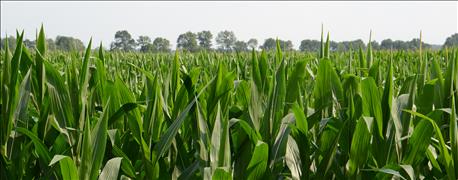
Earlier this year Indiana Certified Crop Advisers recommended scouting for corn rootworm beetles during tasseling and pollination. One of the ideas was to determine if beetles were present that could lay eggs in fields going to corn in 2017. The other was to determine if they were clipping silks on this year’s corp. Some aren’t too fond of walking in tall, hot, humid cornfields. Is it really necessary?

START SCOUTING NOW: Agronomists say the best time to start scouting for rootworm beetles and their possible impact on both this year and next year’s crop is when pollination is ready to begin.
The current panel of CCAs offer their opinions. The panel includes Jamie Bultemeier, agronomist with A&L Great Lakes Labs, Fort Wayne; Gene Flaningam, Flaningam Ag Consulting, Vincennes; and Bryan Overstreet, Extension ag educator in Jasper County. They believe there is a need, and point to two specific reasons for scouting this year’s corn.
1. Determine whether or not rootworm beetles are causing economic damage by clipping silks.
Japanese beetles also clip silks. The scouting process and method used to determine if treatment is warranted is similar. In some cases, you may find both insects working in the same field. What matters is how many silks are being clipped, how short they’re clipped and the maturity of both the corn and insects.
“Scout five places in the field,” Overstreet says. “The economic threshold is if silks are clipped to less than one-half inch and less than 50% of pollination is complete, with beetles still present. Scout fields in the morning if you can. Silks grow at night and beetles feed on them during the day. To check percentage of pollination, shuck the ear and shake it. See which silks fall off. If kernels are pollinated, silks fall off. It’s a simple test, but it can quickly give you an indication of how far pollination has progressed in the field.”
Bultemeier notes that if you find a few clipped silks while scouting, it’s likely not a big issue. Silks grow at a rapid rate. However, sometimes with lots of insects, silks can be completely removed. Then it becomes a serious issue if pollination is still in full swing.
2. Assess the number of beetles present to gauge possible impact on first-year corn in 2017.
Optimal timing for scouting for rootworm beetles is during pollen shed for corn, Flaningam agrees. “We have a variant rootworm in the central Corn Belt that is also attracted to soybean pollen,” he says.
“If corn pollen is not available, rootworm beetles will look for an alternate food source in soybean fields,” Flaningam says. The ability to feed in soybean fields and lay eggs there creates a potential problem for first-year corn that will be planted after soybeans in 2017, he notes. Flaningam advises keeping in mind where you will grow corn in 2017 when looking for rootworm beetles.
Other experts have noted that attempting to determine if rootworm will be an issue in next year’s first-year corn, based on the presence of rootworm beetles in 2016 corn, is tricky business. To make an accurate assessment, you may need to trap rootworm beetles. Some scouting services place traps in soybean fields looking for corn rootworm adults. They continue the scouting process through August in most years to make sure that beetles don’t lay eggs late.
About the Author(s)
You May Also Like




